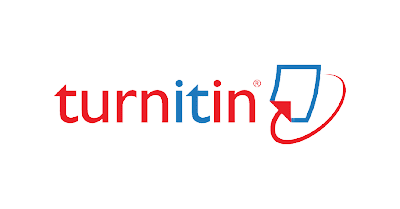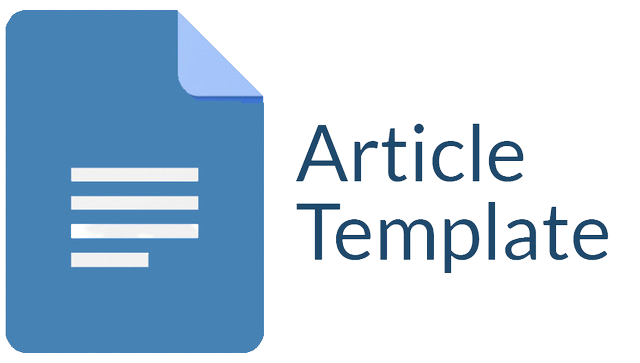FT SMART ENVIRONMENTAL HEALTH MONITORING SYSTEM BERBASIS IOT UNTUK MENINGKATKAN KESADARAN KESEHATAN MASYARAKAT
Abstract
Kesehatan lingkungan merupakan faktor penting dalam mendukung kesejahteraan masyarakat. Namun, di Kabupaten Tegal masih ditemukan berbagai permasalahan seperti tingginya angka kematian ibu, bayi, dan prevalensi stunting yang berpotensi diperparah oleh kondisi lingkungan yang kurang sehat. Salah satu solusi yang dapat diterapkan adalah penggunaan teknologi Internet of Things (IoT) untuk memantau kondisi lingkungan secara real-time. Penelitian ini bertujuan untuk mengembangkan sistem pemantauan kesehatan lingkungan berbasis IoT menggunakan mikrokontroler ESP32 yang terhubung dengan sensor DHT22 (untuk suhu dan kelembaban) serta MQ-135 (untuk kualitas udara). Data yang diperoleh dikirim ke platform cloud ThingSpeak untuk ditampilkan dalam bentuk grafik pemantauan digital. Metode penelitian ini menggunakan pendekatan eksperimental dengan pengujian sensor terhadap alat ukur pembanding untuk mengetahui tingkat akurasi sistem. Hasil pengujian menunjukkan bahwa nilai galat rata-rata pengukuran suhu adalah 2–4%, kelembaban 3–5%, dan kualitas udara sekitar 4%. Nilai tersebut masih dalam batas toleransi akurasi sensor, sehingga sistem mampu bekerja dengan baik dalam memantau kondisi lingkungan. Kesimpulan dari penelitian ini menunjukkan bahwa sistem pemantauan berbasis IoT ini dapat menjadi solusi inovatif yang aplikatif dan edukatif untuk meningkatkan kesadaran serta literasi masyarakat terhadap kesehatan lingkungan. Pengembangan lanjutan disarankan untuk menambah parameter lingkungan lain serta integrasi notifikasi otomatis agar lebih responsif terhadap perubahan kondisi lingkungan
Downloads
References
Adhicandra, I. (2024). Studi kasus tentang penggunaan teknologi Internet of Things (IoT)
dalam meningkatkan efisiensi energi di bangunan pintar. Edusaintek: Jurnal
Pendidikan, Sains Dan Teknologi, 11(2).
Albuali, A., & others. (2023). Scalable lightweight IoT-based smart weather station.
Sensors, 23(12), 5569. https://doi.org/10.3390/s23125569
Alfikri, H. (2024). Implementasi Internet of Things pada Sistem Parkir Masjid.
Edusaintek: Jurnal Pendidikan, Sains Dan Teknologi, 11(4), 1908–1921.
https://journalstkippgrisitubondo.ac.id
Ao, L. L., Viegas, S., Germany, B. B., & Hilger-Kolb, J. (2024). Leveraging digital
platforms to improve Public Health in hospital smart buildings. The European
Journal of Public Health, 34. https://doi.org/10.1093/eurpub/ckae144.492
Ezquerro, L., Coimbra, R., Bauluz, B., Núñez-Lahuerta, C., Román-Berdiel, T., &
Moreno-Azanza, M. (2024). Large dinosaur egg accumulations and their
significance for understanding nesting behaviour. Geoscience Frontiers, 15(5).
https://doi.org/10.1016/j.gsf.2024.101872
Fahim, M., el Mhouti, A., Boudaa, T., & Jakimi, A. (2023). Modeling and
implementation of a low-cost IoT-smart weather monitoring station and air quality
assessment based on fuzzy inference model and MQTT protocol. Modeling Earth
Systems and Environment, 9, 4085–4102. https://doi.org/10.1007/s40808-023-
-w
Guo, J. (2025). A Review of Research on Embedded Internet of Things Technologies
Application in Environmental Monitoring. Applied and Computational
Engineering. https://doi.org/10.54254/2755-2721/2025.21870
Imankulova, B., & others. (2023). IoT-based real-time indoor air quality monitoring and
web visualization. CEUR Workshop Proceedings.
Jadhav, R., & Banerjee, S. (2025). Research for Advancement for Environmental
Monitoring using Internet of Things (IoT). Publication of the International Journal
and Academic Research. https://doi.org/10.63222/pijar.v2i1.25
Kristiyana, S. (2020). Air quality monitoring system in ThingSpeak-based applications
using Internet of Things (IoT). WSEAS Proceedings / Journal Article.
Lita, C. N., Pardede, A. M. H., & Syahputra, S. (2022). Prototype design: IoT based air
quality monitoring tool for urban environment. Journal of Artificial Intelligence
and Engineering Applications (JAIEA). https://doi.org/10.59934/jaiea.v4i1.643
Malche, T., Maheshwary, P., & Kumar, R. (2019). Environmental Monitoring System for
Smart City Based on Secure Internet of Things (IoT) Architecture. Wireless
Personal Communications, 107, 2143–2172. https://doi.org/10.1007/s11277-019-
-0
Pasika, S., & Gandla, S. T. (2020). Smart water quality monitoring system with costeffective using IoT. Heliyon, 6. https://doi.org/10.1016/j.heliyon.2020.e04096
Putra, D. I., Aisuwarya, R., Ardopa, S., & Purnama, I. (2018). Sistem cerdas reservasi
dan pemantauan parkir pada lokasi kampus berbasis konsep Internet of Things.
Edusaintek: Jurnal Pendidikan, Sains dan Teknologi Vol. 12 (4) 2025 | 2097
Smart Environmental Health Monitoring System Berbasis IoT Untuk Meningkatkan …
Jurnal Teknologi Dan Sistem Komputer, 6(2), 57–63.
https://doi.org/10.14710/jtsiskom.6.2.2018.57-63
Ramadani, F. Q., & others. (2025). Design and implementation of a dual-cloud IoT air
quality monitoring system. Journal of AIRA.
Reddy, C. R., Mukku, T., Dwivedi, A., Rout, A., Chaudhari, S., & others. (2020).
Improving spatio-temporal understanding of particulate matter using low-cost IoT
sensors. ArXiv Preprint.
Shahzad, M. F., Xu, S., Lim, W. M., Yang, X., & Khan, Q. R. (2024). Artificial
intelligence and social media on academic performance and mental well-being:
Student perceptions of positive impact in the age of smart learning. Heliyon, 10(8).
https://doi.org/10.1016/j.heliyon.2024.e29523
Susanto, D., & colleagues. (2022). Kalibrasi dan validasi sensor IoT untuk pemantauan
lingkungan. Jurnal Teknologi Elektro Dan Komputer, 15(1), 11–18.
Ullo, S., & Sinha, G. (2020). Advances in Smart Environment Monitoring Systems Using
IoT and Sensors. Sensors (Basel, Switzerland), 20.
https://doi.org/10.3390/s20113113
Zhang, W., Xu, M., Feng, Y., Mao, Z., & Yan, Z. (2024). The Effect of Procrastination
on Physical Exercise among College Students—The Chain Effect of Exercise
Commitment and Action Control. International Journal of Mental Health
Promotion, 26(8), 611–622. https://doi.org/10.32604/ijmhp.2024.052730
Copyright (c) 2025 rizki prasetyo

This work is licensed under a Creative Commons Attribution-ShareAlike 4.0 International License.
Jurnal allows anyone to compose, correct, and do derivative works, even for commercial purposes, as long as they credit for the original work. This license is the freest. It is recommended for maximum distribution and use of licensed material.
The submitted paper is assumed not to contain any proprietary materials that are not protected by patent rights or patent applications; The responsibility for technical content and protection of proprietary materials rests with the authors and their organizations and not the responsibility of journal or its editorial staff. The primary (first/appropriate) author is responsible for ensuring that the article has been viewed and approved by all other authors. The author's responsibility is to obtain all necessary copyright waivers to use any copyrighted material in the manuscript before submission.
Jurnal Pendidikan, Sains dan Teknologi allows the author(s) to hold the copyright without restrictions and allow the author(s) to retain publishing rights without restrictions. Jurnal Pendidikan, Sains dan Teknologi CC-BY-SA or an equivalent license as the optimal license for the publication, distribution, use, and reuse of scholarly work. Jurnal Pendidikan, Sains dan Teknologi allows the author(s) to hold the copyright without restrictions and allow the author(s) to retain publishing rights without restrictions. Jurnal Pendidikan, Sains dan Teknologi CC-BY-SA or an equivalent license as the optimal license for the publication, distribution, use, and reuse of scholarly work.
In developing strategy and setting priorities Jurnal Pendidikan, Sains dan Teknologi recognize that free access is better than priced access, libre access is better than free access, and libre under CC-BY-SA or the equivalent is better than libre under more restrictive open licenses. We should achieve what we can when we can. We should not delay achieving free in order to achieve libre, and we should not stop with free when we can achieve libre.
Jurnal Pendidikan, Sains dan Teknologi is licensed under a Creative Commons Attribution-ShareAlike 4.0 International License.
You are free to:
- Share a copy and redistribute the material in any medium or format
- Adapt a remix, transform, and build upon the material for any purpose, even commercially.
- The licensor cannot revoke these freedoms as long as you follow the license terms.






